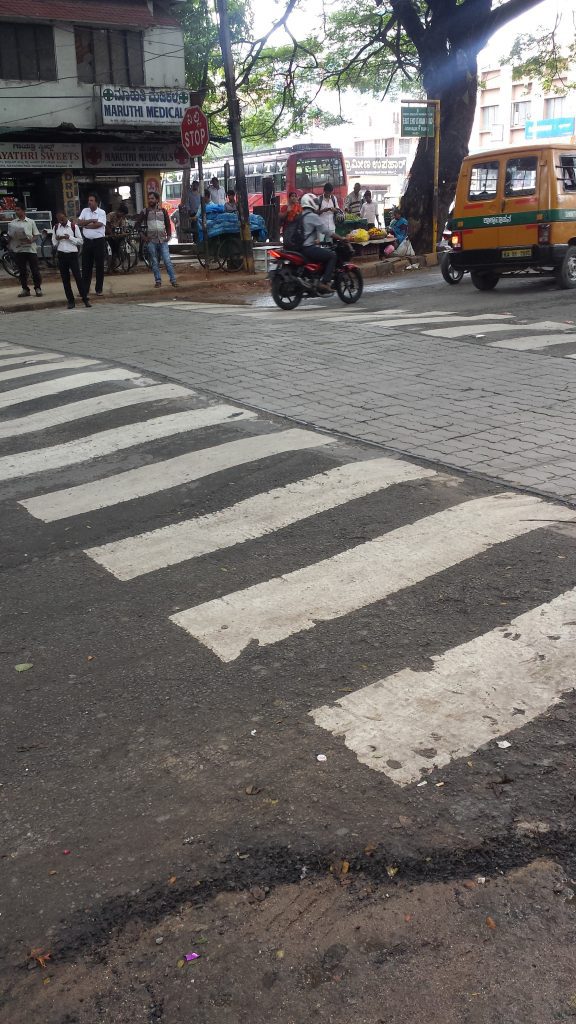I’ve gotten quite a bit of exposure to living with the time zone difference and dealing with Indian traffic.
My hometown Harare, Zimbabwe is in Central Africa (CAT) time zone. Bengaluru, India is on India Standard Time (IST), currently 3½ hours ahead of CAT.When in Harare my complaint is that during the winter I have to get out of the bed at 5:00 am for our work typically starts at 7:00 am. Here I have no problem as work starts at 9:00 am. Now I have ample time to get to the office.
Indian Traffic
Traffic in India is very different from traffic in Zimbabwe. Beyond the general busy-ness, a key difference is the variety of traffic on the road .Popular car makes are Toyota,Mahindra and Tata(expect to bump into a Ferrari here). It isn’t just cars and motorbikes (which can all maintain the same speed). In Zimbabwe we get annoyed if a backhoe or cyclist is slowing down the flow of traffic. Here in India there are oxen towing carts, people pushing carts, horses, bicycles, tuk-tuks (known as ‘Autos’ in India), overloaded slow moving trucks, vehicles that aren’t running properly, etc. Add to that cows and dogs deciding to randomly cross the street and lots of pedestrians crossing through the traffic. Generally it appears very chaotic where each vehicle moves ahead where it can, taking advantage of any open space there is. Everyone tries to flow around slow moving vehicles. Honking is very frequent to let people know you are there.
Out of all this apparent chaos, traffic does move and you do get to where you want to go. To some degree there are unwritten rules and the behavior of other drivers is quite expected to the locals. But the locals still shake their heads at drivers going the wrong way down divided roads or suddenly changing direction.
Two-wheelers dominate the city’s roads, followed by cars. The number of transport vehicles stands at over 5.91 lakh ( 5,910,000). Every second person has a vehicle in Bengaluru. And the 60 lakh number is excluding the vehicles that come in and go out of the city.
There are over a hundred thousand (lakh) cabs in the city
Private taxis (yellow boards) are a popular mode of transport in the city and this has been aided by Uber and Ola online booking applications.There are a lot of cabs,the number in Bengaluru stands at over 1.05 lakh (hundred thousand) as of now, up from about 50,000 in 2012. Interestingly, the number of taxis in the city is higher than that of buses .The number of taxis is on a gradual increase. Cabs offer a last-mile connectivity to passengers which buses probably do not.
Autorickshaws

Pic: Keane Matenga
This is a light three-wheeled vehicle driven by a motorcycle engine.It is three wheeled and three seater (in addition to driver) low floor vehicle with a contract carriage permit.The auto is popular among city visitors and citizens alike particularly over short distances.The driver is either the owner himself,or the renter who pays the owner a fixed daily rent to ply the auto.The minimum meter fare is Rs. 25 (good up to 1.9 km)
Speed Humps

Pic: Keane Matenga
The way this is all controlled in traffic is via the strategic placement of speed humps. For instance if the road is divided, there are specific breaks in the divider where you are allowed to make a U-turn. But how do you do that into a continuous stream of oncoming traffic? Here they place a speed bump in the way of the oncoming traffic to slow it down and space it out, so that the people can merge in without having a head on collision. There aren’t many traffic lights here, but the strategic placement of obstacles seems to do the trick. The main downside of the speed humps is that they are rather severe and hard both on the people’s backs and on the car’s suspension.
Honking
The most immediately noticeable difference between driving in India versus Zimbabwe is all the honking. In Zimbabwe honking is only used in extreme circumstances and people get irate (often leading to road rage) if they feel like they’ve been honked at unfairly. In India honking is a form of communication. There are subtle nuances as a quick tap of the horn is to let someone know you are there, a longer hoot to say “watch out”. There are other forms of communication like flashing your lights (usually to mean move over so I can pass).
Certainly it’s been an interesting trip so far and I’m picking up lots of insights in how things work.